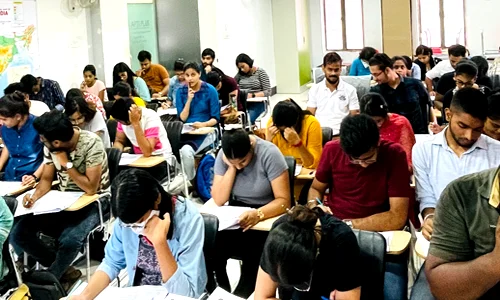



Dust pollution is a significant contributor to deteriorating air quality, mainly arising from construction work, road dust, industrial activities, and natural windblown sources. It increases particulate matter levels, harms human health, disrupts visibility, and affects ecosystems. Effective control requires better regulation, enforcement, dust-suppression measures, greener urban design, and active public awareness.
Click to View MoreAt the Johannesburg G20 Summit, India proposed six initiatives: a Traditional Knowledge Repository, Africa Skills Multiplier Program, Global Healthcare Response Team, drug-terror nexus framework, Critical Minerals Circularity plan and Open Satellite Data Partnership. These aim to boost health, security, technology and reinforce India’s role as the Global South’s voice.
Click to View MoreRelaxing industrial green-cover norms prioritizes convenience over ecological health. On-site green belts only mitigate dust and noise but fail to restore ecosystem services like carbon storage and biodiversity. Policymakers should combine limited on-site greenery with mandatory off-site landscape-level restoration to embed industries as stewards of nature.
Click to View MoreThe Global Energy Leaders’ Summit 2025 in Puri (Dec 5–7), hosted by Odisha and the Tony Blair Institute, focuses on “Powering India: Sufficiency, Balance, Innovation.” It supports India’s pillars of energy access, efficiency, sustainability, and security while advancing cooperation, clean energy transition, technology, and Net-Zero 2070 goals.
Click to View MoreIn 2024, India recorded the largest absolute increase in greenhouse gas emissions globally, making it the third-largest emitter after China and the U.S. Despite this, India’s per capita emissions remained less than half the global average, reflecting relatively low emissions intensity. The rise was driven mainly by fossil fuel use in power generation, industry, and transport, along with methane from agriculture and deforestation. This highlights the challenge of balancing economic growth with climate responsibility.
Click to View MoreCOP30 in Belém marks a shift from talks to real action. With the U.S. pulling back, Brazil, India, China, and South Africa are expected to lead. The summit highlights forest protection, the Baku to Belém roadmap, and finance, urging developing nations to pair climate ambition with fairness.
Click to View MoreWaste management in India is a complex and multidimensional challenge, involving municipal, industrial, biomedical, e-waste, plastic, and agricultural waste. Rapid urbanization, population growth, and inadequate infrastructure have compounded the problem. The government has initiated several programs, including the Swachh Bharat Mission, Waste to Wealth Mission, and GOBARdhan Scheme, focusing on scientific disposal, recycling, energy recovery, and citizen participation. Effective waste management requires a holistic approach that integrates technology, policy, social inclusion, economic sustainability, and public awareness, transforming waste from a problem into a resource for environmental and economic benefits.
Click to View MoreA recent scientific report warns that Earth is under severe climate distress, with 22 out of 34 key indicators reaching record highs. Rising global temperatures, greenhouse gas concentrations, ice melt, and extreme weather events signal that the planet is nearing critical tipping points. Despite growth in renewable energy, heavy reliance on fossil fuels continues, emphasizing the urgent need for rapid climate action to stabilize ecosystems and protect human and ecological well-being.
Click to View MoreIndia aims to become a $30 trillion economy in the next 25 years, driven by sustained GDP growth, strategic government policies, and long-term planning. While past growth trends and currency factors make this projection plausible, challenges such as slowing growth rates, inflation, and infrastructure gaps remain. Achieving this goal will require multi-dimensional efforts in trade, investment, technology, and human capital development, positioning India as a major global economic power by 2050.
Click to View MoreUnchecked groundwater extraction is sinking major cities, weakening infrastructure and heightening flood and saltwater risks. India must urgently regulate borewells, enforce rainwater harvesting, and adopt integrated, science-based water governance with community participation to safeguard urban stability and secure its most vital resource—groundwater.
Click to View MoreIndia encourages hybrid solar-wind-storage systems to ensure a steady clean energy supply, backed by government policies, despite challenges like high costs and land shortages. To achieve sustainable energy goals and become a global leader, India needs to focus on advanced storage solutions, smart grid development, and adaptable regulations.
Click to View MoreIn 2024, global tree cover loss surged due to wildfires, with tropical forests burning 370% more than in 2023, releasing 3.1 gigatonnes of CO₂. Climate change and droughts intensified fires across the US, Canada, EU, and Asia, threatening biodiversity and ecosystems. In India, forest fires are increasingly severe, affecting forest health, wildlife, and local communities. Government measures include fire management, afforestation, and community engagement, while long-term strategies emphasize climate adaptation, monitoring, and resilience building.
Click to View More
© 2025 iasgyan. All right reserved